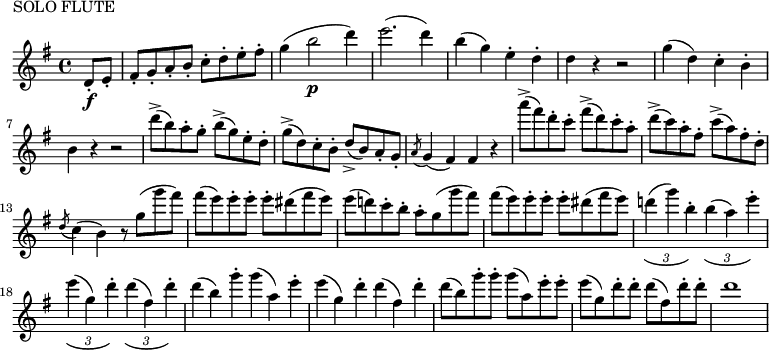Piccolo in "Leonora," No. 3
On one occasion a very celebrated conductor at a rehearsal of this work desired all three flutes to play the scale in unison. The first flautist refused to allow this, on the ground that Beethoven wrote it for one
Beethoven, Overture, Leonora, No. 3

flute only, and that it must be so played. Both were obstinate on the point, a quarrel ensued, and the first flute soon after threw up his post.
Weber may almost be said to have inaugurated a new era in scoring for the wood-wind. His treatment of the flute in Der Freischültz is very remarkable.Weber Berlioz says of the sustained notes in "Softly sighs": "There is something ineffably dreamy in these low holding notes of the two flutes, during the143
